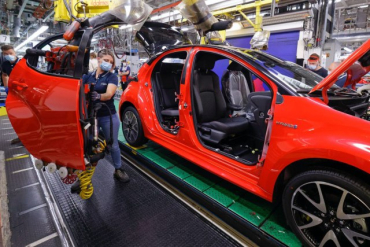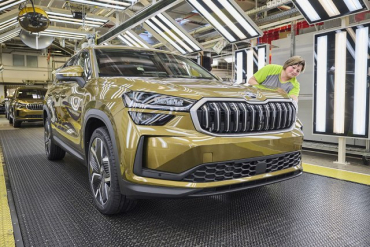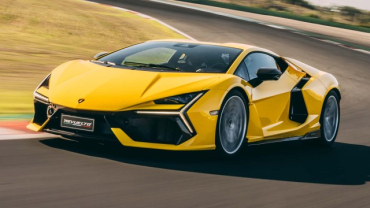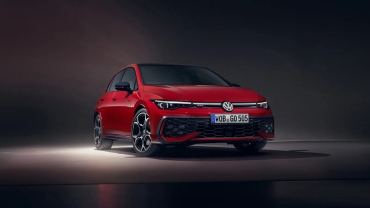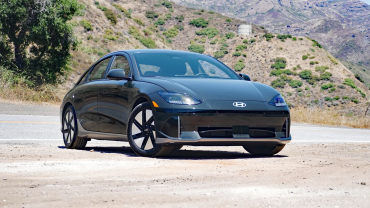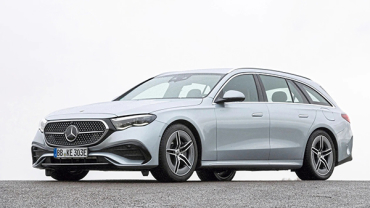
Worldcarblog.com
Toyota CEO: There will never be more than 30% electric cars on the road
A billion people around the world live in areas without electricity. Toyota also supplies vehicles to those regions, so electric cars alone cannot provide transportation for everyone.
Toyota will never switch to electric cars only – hybrids and hydrogen will play an important role in the future.
"Regardless of the progress of electric cars, I think they will still have a market share of 30 percent," says Toyota president Akio Toyoda.
After speaking at the Tokyo Motor Show, when asked how he sees Toyota's future plans with electric cars and hydrogen, Toyoda stated that the answer would take four hours, but still decided to answer in four minutes, writes Revijahak.
Many manufacturers and countries are currently working to switch to electric cars only, and the EU will ban the sale of electric cars by 2035. Toyota has completely different ambitions and plans.
"A billion people around the world live in areas without electricity. In the case of Toyota, we also supply vehicles to those regions, so electric cars alone cannot provide transportation for everyone," said Akio Toyoda.
Hybrids have so far been the most successful technology for reducing CO2 emissions. He says that Japan is the only developed country that, thanks to hybrids, managed to reduce CO2 emissions by as much as 23 percent and that the media is to blame for hiding this information.
"Toyota will therefore produce about 30 percent of electric cars out of about 10 million cars produced annually," claims Toyoda. -
"The remaining 70 percent will be hybrids, fuel cell cars and hydrogen," Toyoda concluded.
Opel is reviving the Frontera
The new Frontera will feature a spacious cabin, which should attract customers looking for a compact family vehicle.
The name Frontera is already familiar to car enthusiasts and fans of the Opel brand. The off-road vehicle based on the Isuzu MU gained great popularity in the 1990s, primarily due to its off-road capabilities.
Opel has now announced the return of the Frontera name, or rather the model that they will introduce to the market this year. The German manufacturer states that it will be an SUV that will be available with electric drive from the start of sales.
The Opel Frontera will have plenty of space in the cabin, which should attract customers looking for a compact family vehicle. In addition to electric versions, petrol engines and plug-in hybrids are also expected.
The question arises: which segment will the Frontera belong to? Given that Opel is launching the successor to the compact SUV Grandland this year, some media speculate that the Frontera will be an extended version of that vehicle. Similarly, the sister brand Peugeot does the same with the 3008 and 5008 models.
On the other hand, there are speculations that the new Frontera is the successor to the current Crossland model.
In any case, you can forget about the former Frontera with a classic steel chassis carrying a body with an engine. The new model will be a family SUV with a monocoque body, which will also have numerous functionalities, just a slightly different structure.
Production of the new Skoda Kodiaq begins
The Czech company has announced the serial production of the new generation of its largest SUV.
Skoda Auto will start serial production of the second generation of the Kodiaq, its flagship SUV model, at the factory in Kvasiny, Czech Republic. In preparing the factory for the new model, the company has made significant investments in the modernization of the production line.
By transferring the production of the new generation Superb from Kvasiny to Bratislava in Slovakia, the Czech car manufacturer has created additional capacity in Kvasiny for the production of successful SUV models Kodiaq and Karoq.
The new Kodiaq had its global premiere in October, and it will be available with petrol, diesel, and plug-in hybrid options with a large electric range.
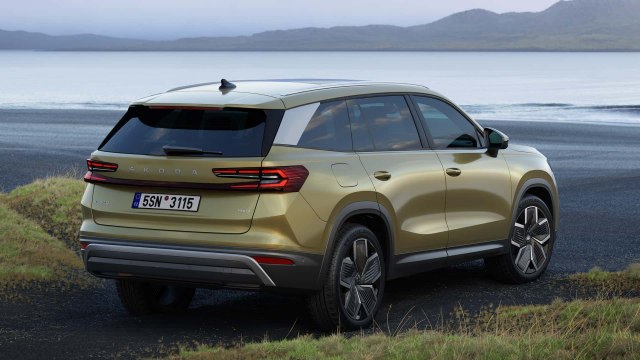
The design could be described as a variation of the previous model but with many modernized details. Split headlights still exist, the side silhouette is now elongated, and the taillights have been modernized, now connected by a thin LED strip.
Overall, when it comes to design, Skoda has clearly played it safe as it is one of the brand's most important models, which has sold over 800,000 units to date.
The new Kodiaq is "stretched" to 4,758 mm (+61 mm compared to its predecessor), while the wheelbase remains the same (2,971 mm). The car is slightly narrower and lower than its predecessor.
The practicality is unmatched in this segment, and there is a trunk of 910 liters, which is 75 liters more than before. If you choose the model with seven seats, the trunk volume decreases to a still respectable 340 liters behind the third row.
As for the engines, there's something for everyone – it all starts with the 1.5 TSI using "light" hybrid technology and delivering 150 HP, as well as cylinder deactivation technology under lighter loads. The larger 2.0 TSI has 204 HP and comes with all-wheel drive, while the 1.5 TSI is offered only with front-wheel drive.

Those who still prefer a diesel engine can opt for the 2.0 TDI with 150 HP and front-wheel drive or with 193 HP and all-wheel drive. The transmission is a seven-speed automatic.
Finally, there is a plug-in hybrid with front-wheel drive and 204 HP, which can drive up to 100 km on electric power alone. The battery can be charged at alternating current chargers with a power of up to 11 kW and direct current chargers with 50 kW.
We recommend for you
Inside, a significant novelty is the relocation of the gear lever to the steering column (all versions come with an automatic transmission).
The multimedia system is available in sizes of 10 or 13 inches, depending on the equipment package. Below the large screen are functional buttons that can be configured to adjust air conditioning, audio system, seat heating and cooling functions, and more.
Lamborghini celebrates a record year, Revuelto sold out until the end of 2026.
The supercar with a V12 engine helped Lamborghini achieve a record year in terms of sales.
Lamborghini unveiled the successor to the Aventador in March of last year, and the first units of the new supercar were delivered to customers at the end of last year. Equipped with a V12 engine, the Revuelto has had an excellent start, as the Italian car manufacturer has just confirmed a long waiting list for the company's flagship product.
Lamborghini has released detailed sales results for the year 2023, in which the company managed to sell more than 10,000 cars in twelve months – a new record in the manufacturer's history. While this figure alone is impressive, even more interesting is the fact that the Revuelto is already sold out until the end of 2026.
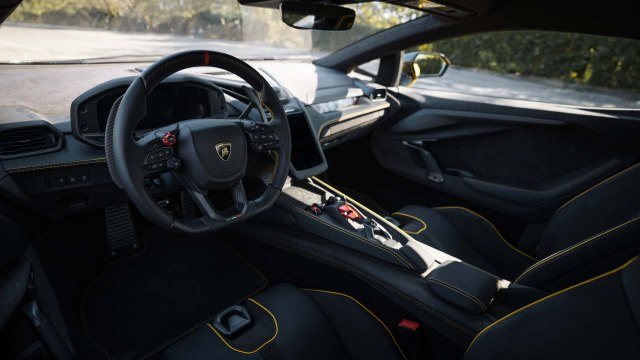
Essentially, this means that customers ordering the electrified V12 supercar today will have to wait almost three years for their vehicle.
It is important to note that Lamborghini currently only sells the base Revuelto model. "Hardcore" variants and special editions will arrive later in the model's lifecycle, but this will not happen until demand for the base version remains high.
As a reminder, Lamborghini waited seven years after the debut of the Aventador to introduce the upgraded Aventador Super Veloce Jota LP770-4, so a similar timeframe can be expected for the Revuelto SVJ.
Lamborghini expects the Revuelto to play a key role in the brand's growth in the three most important markets. The United States remains the largest individual market for Lamborghini, followed by Germany and China.
The Urus was the company's best-selling product last year, followed by the Huracan.
We recommend for you
The last 12 Aventadors were delivered to their new owners last year, and Lamborghini has yet to announce the first production and sales numbers for the Revuelto.
2025 VW GTI revealed: Buttons return but the stickshift retires
VW's celebrating 50 years of the Golf, but this is all the celebration we'll get
Volkswagen revealed the updated Golf to the world late Tuesday, marking the nameplate's 50th anniversary with an overhauled (but not all-new) lineup that will come to our shores in the form of the 2025 GTI. Sadly, it'll be packing light this year, as there's no need to bring the manual gearbox along. Like the Golf itself in America, the manual GTI is but a memory. While its dual-clutch gearbox may be a downgrade in engagement from a real-deal manual, it's still an excellent transmission that is equally at home on the street or track, so let's not write off the GTI's enthusiast credentials just yet. And there's good news from a daily driving standpoint too, as VW has heard the criticisms of its touch-based infotainment system and not only updated the underlying tech, but brought back some key physical controls to boot.
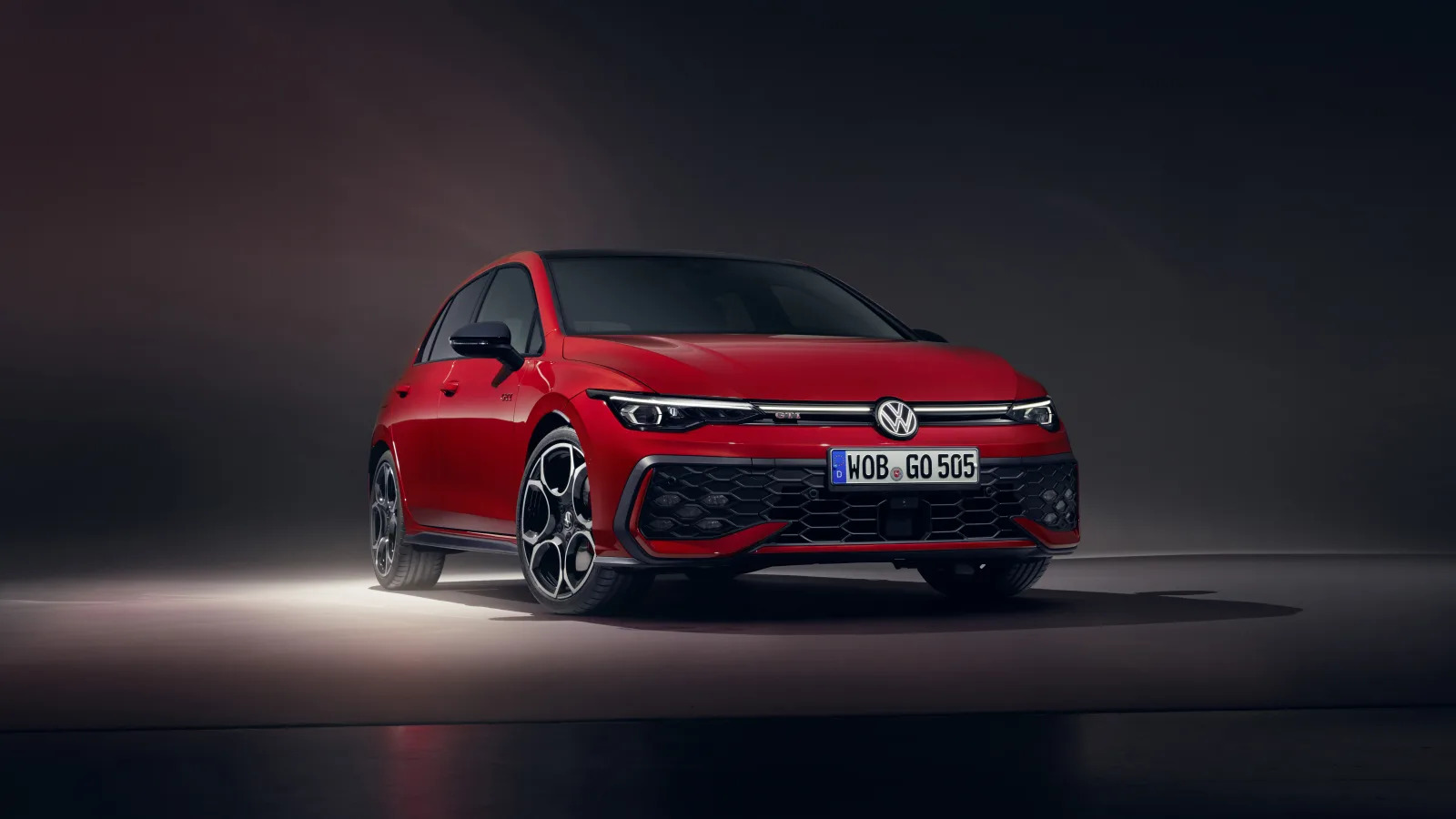
As the great philosopher John Dorian once said, little victories count for a lot around here, and if you can look past the departure of the manual transmission, the Mk8.5 GTI is littered with them. Power is up from 241 horses to 262 (VW says this spec is for European models, but we don't expect much to change); that's six horsepower less than the plug-in hybrid (and not-for-America) GTE, which continues to strike us as deliberate. No torque figure was available at publication time, but with power still coming from a turbocharged 2.0-liter four-cylinder, it's unlikely we'll see much increase from the 273 pound-feet offered in the outgoing GTI.
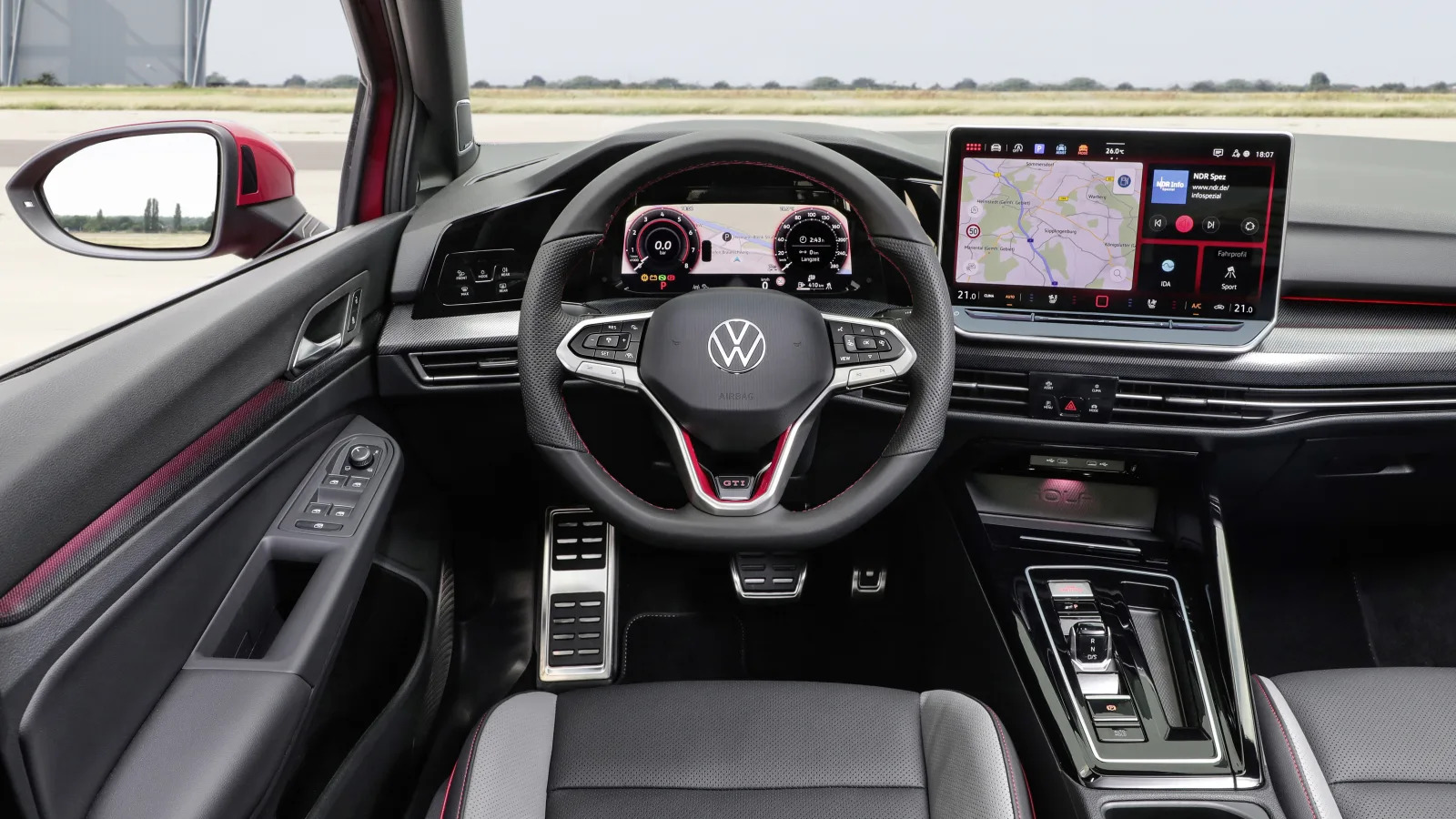
Then there's the cabin. We've bemoaned the current (above left) GTI's over-reliance on touch tech since release, and while the return of physical wheel controls (above right) is certainly fantastic to see, perhaps the biggest news here is that we're getting a new version of the software suite underpinning it all. It would be easier to live with VW's tech if it worked as intended, but the existing infotainment system has a reputation for simply not booting up at times (or crashing with uncommon frequency even if it does).
And due to its integration with the rest of the car's computers, issues with a modern infotainment system can rapidly escalate to show-stoppers. VW says it's MIB4 infotainment system should address the complaints leveled at the previous tech and offer more features to boot. As an added bonus, with the new floating infotainment screen, we get a redesigned center stack featuring illuminated climate controls that VW says should be more ergonomically friendly. Those are small wins, sure, but surely they'll improve the GTI's day-to-day livability.
We recommend for you
Apart from the updated cabin and tweaked powertrain, there's not a ton more to the Mk 8.5 GTI. VW's release detailed the rest of its European-market variants less three — the GTI Clubsport, Golf R and Golf R wagon. Those three will be revealed later in 2024 and will likely hit European showrooms in time for 2025. Of the models revealed Tuesday, only the GTI is due to come stateside; it and the Golf R were the only models not discontinued in the U.S. after 2021. Look for more on the R when it launches in Europe, at which point we should learn about VW's plans to bring it here.
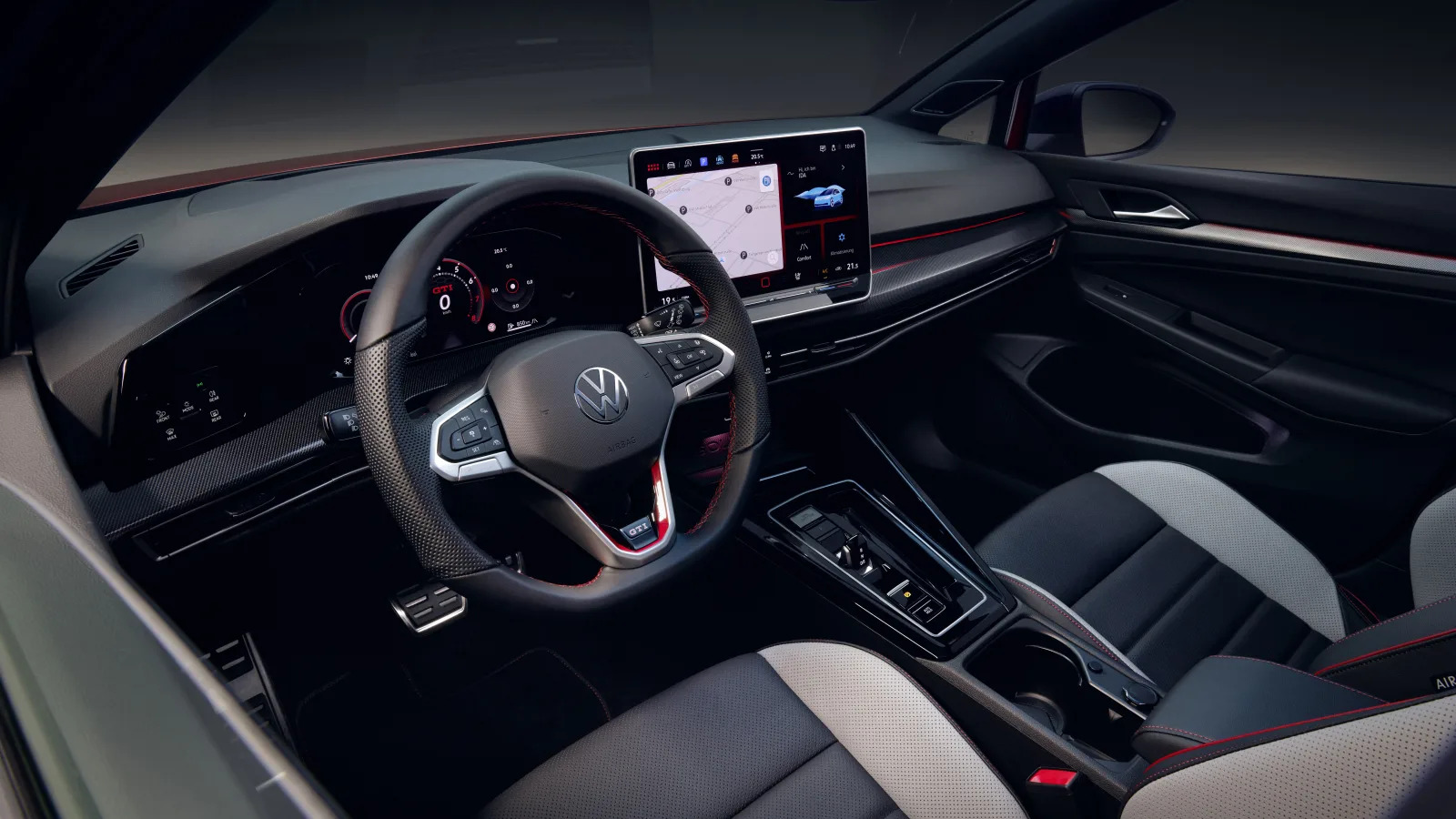
Source: autoblog.com
2024 Hyundai Ioniq 6 Review: Best alternative to a Model 3
Futuristic sedan offers ample range, rapid charging and a great driving experience
The Ioniq 6 is the best of the E-GMP vehicles to drive, and its aerodynamic shape makes it super efficient with a long range. You give up utility versus the Ioniq 5, but the benefits will be worth it for some.
Pros: Fun, efficient driving; stand-out design; quick charging and ample range; well-executed safety tech
Cons: Too-cheap interior materials, especially in SE; some irritating controls; small trunk; max range tied to base trim
Crossover SUVs may rule the day, but there’s still a market for good old-fashioned sedans. Of course, there’s absolutely nothing else old-fashioned about the 2024 Hyundai Ioniq 6, an electric car that looks like it arrived in your driveway from the future. Indeed, its striking design is a key part of its appeal – and not just from an aesthetic standpoint. The ultra-aerodynamic shape contributes to exceptional efficiency and range, although the latter differs considerably based on motor and trim level. Perhaps a bit too much, as the only way to get the 361-mile max range is with the base SE trim and its excessively downmarket cabin.
Even those versions with less range, however, go much further than the typical EV and recharge much quicker. This is because the Ioniq 6 shares its E-GMP platform with the similarly gifted Hyundai Ioniq 5, Kia EV6 and Genesis GV60. Because the Ioniq 6 is a lighter, more aerodynamic car than those crossovers, though, it’s also the most athletic to drive on top of offering the best range and efficiency. We’ve consistently been surprised by how much fun can be had behind the Ioniq 6’s grippy two-spoke wheel. We also found it to be a highly capable and comfortable highway cruiser, blessed with a comfortable ride, quiet cabin and excellent driver assistance tech.
As much as we enjoy the Ioniq 6, its hangups are not insignificant. Interior quality is one, some frustrating controls are another. The trunk is also small for a sedan. Admittedly, all those issues also exist in the Ioniq 6’s main competitor: the Tesla Model 3. That has access to Tesla’s game-changing Supercharger network, however, along with lower prices (at least at the time of this writing), stronger acceleration and better range with all-wheel drive. Both are excellent choices, though, and prove there’s still life in the sedan market.
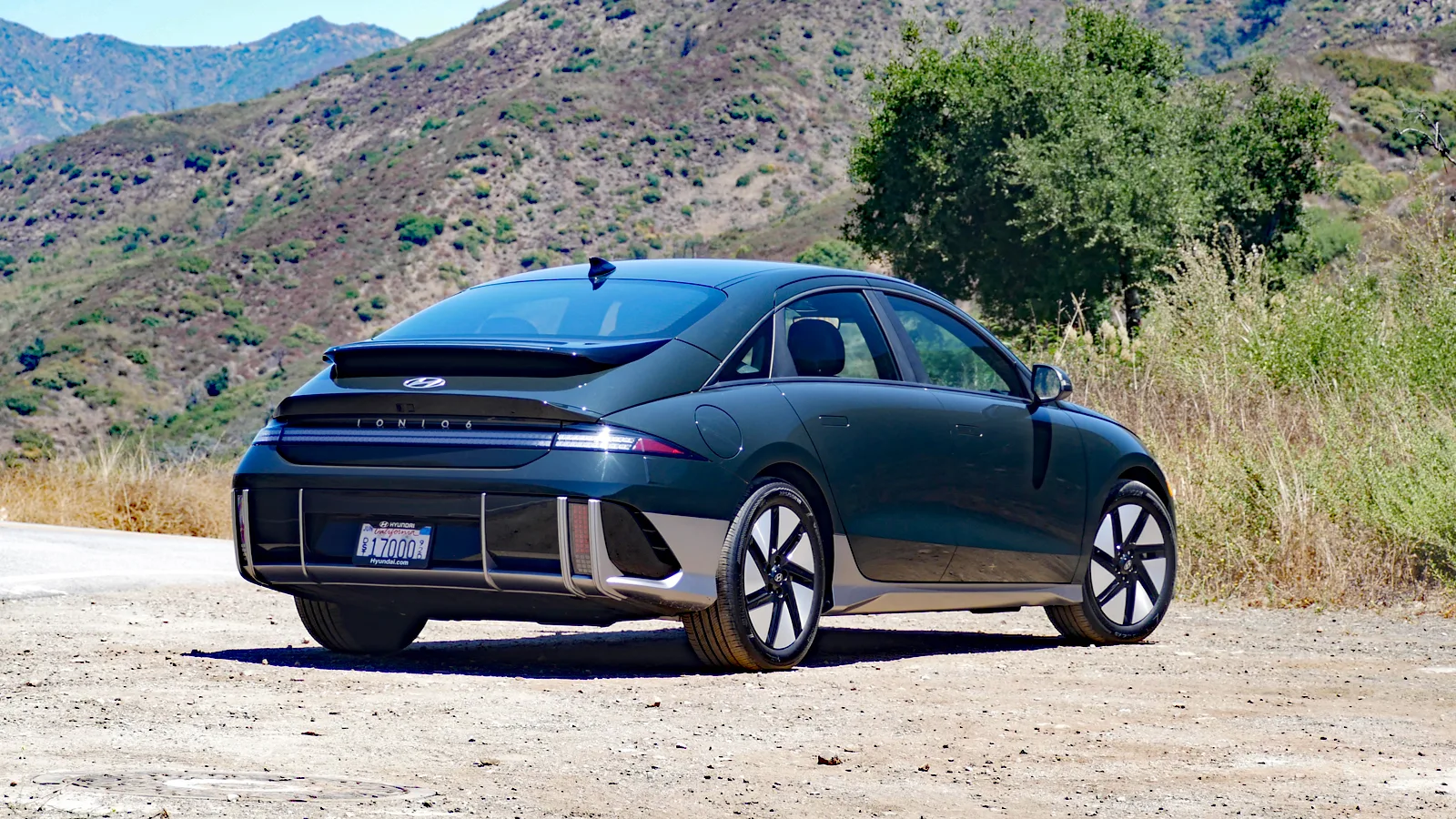
What's new for 2024?
The Ioniq 6 carries over unchanged for 2024.
What are the Ioniq 6 interior and in-car technology like?
The Ioniq 6 interior looks at first less bold than the streamlined exterior, but look closer, and it reveals itself to be one of the most creative cabins on the market. Though certainly reminiscent of the Ioniq 5, there are all kinds of unique details, such as the ripples on the doors that reflect the multi-color ambient light. Those doors are also distinctive in that they’re bereft of window and locking buttons. Those are on the center console, which admittedly takes some getting used to (unless you’ve owned a Jeep Wrangler or old BMW).
Materials quality also doesn’t look or feel as good as what you’d find in a Hyundai Sonata, for instance, or other midsize sedans. This is particularly evident in the base SE (pictured above in black), which is the only trim level available with the 361-mile range estimate. Its mandatory cloth trim looks and feels cheap, while the hard plastic phone bin will be a constant reminder that you didn’t opt for a high trim as your phone slides around without the benefit of wireless charging. You can read more about the Ioniq 6 SE interior here, but in general, we wish there were a way to get the max range with even a slightly nicer and better-equipped interior.
We recommend for you
In terms of functionality, the Ioniq 6 mostly succeeds. The dual 12.3-inch screens are bright, clear and responsive, while the infotainment interface is one of the easiest in the industry to use. The supporting touch-sensitive climate controls are less so, and we dislike the need to call up a touchscreen menu to engage the heated and ventilated seats or heated steering wheel. We also miss the “radio” shortcut button found in most other Hyundai and Kia vehicles – again, you have to press one button (“Media”) to bring up a touchscreen submenu. On the other hand, the fact that the Ioniq 6 has physical controls at all, plus instruments in front of the driver, stands in sharp contrast to its main rival, the Tesla Model 3 and its one-screen-does-everything interior.
How big is the Ioniq 6?
Like the other E-GMP cars, the Ioniq 6 is deceptively large. The short overhangs and unusual proportions make it seem like a small vehicle, but it's only a couple inches shorter than the Hyundai Sonata family sedan. The long wheelbase allows the interior to be particularly large, especially in regard to legroom. Surprisingly, the hunkered-down shape of the Ioniq 6 doesn’t overtly compromise visibility (it’s quite good, actually), while headroom up front remains decent despite a seating position that’s perhaps a smidge high. The seats are wide but a bit flat, and loads of adjustment makes it easy to find a comfortable seating position. Rear headroom is a little tight due to that distinct shape created for the sake of aerodynamic efficiency, but again, legroom is vast. Six-footers will have no problem sitting back-to-back, and you’ll have no problem with kids’ shoes kicking the passenger seat up front.
The trunk, on the other hand, is poor. Its volume of 11.2 cubic-feet would be small for a compact sedan, let alone a midsize one. Not surprisingly, the Ioniq 6 was unable to swallow all the bags of our standardized luggage test. By contrast, the Sonata’s 16.3-cubic-foot trunk had space left over for multiple bags. There is a substantial underfloor storage area, however, plus a frunk compartment perfectly sized to store the tire mobility kit and charge cord.
What are the Ioniq 6 electric range and performance specs?
The Ioniq 6 has three powertrain options, two of which are single-motor, rear-drive setups, and the third with two motors and therefore all-wheel drive.
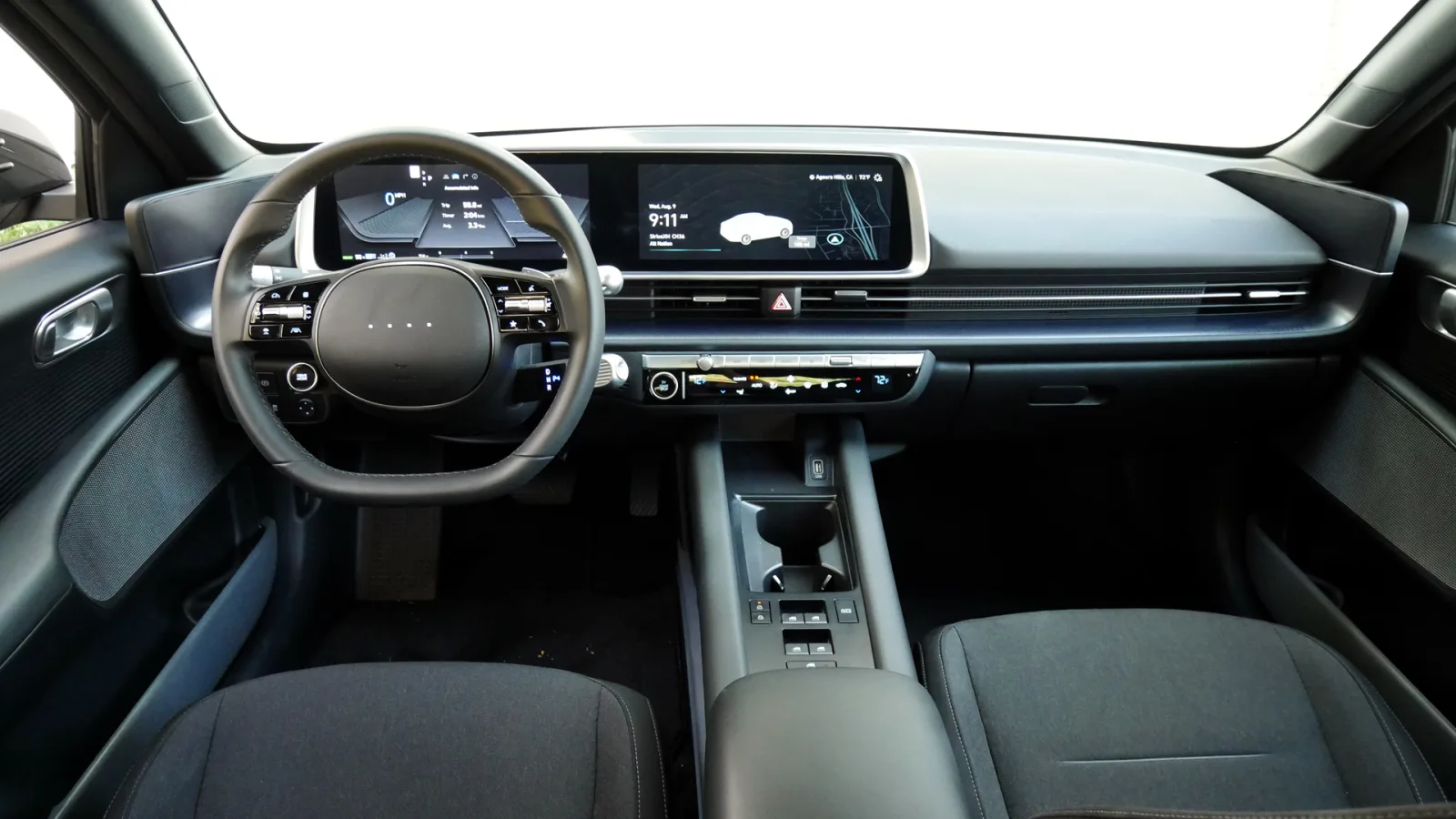
The first single-motor arrangement is exclusive to the SE Standard Range. It makes just 149 horsepower and 258 pound-feet of torque. It also gets the smallest battery, 53 kilowatt-hours, which returns an estimated range of 240 miles. It is quite efficient, coming in as the second-most frugal Ioniq 6 behind the long-range, rear-drive SE. Combined miles-per-gallon-equivalent is rated at 135.
Moving up to the other trim levels, the standard powertrain is the long-range, rear-drive option. It has a 77.4-kWh battery with higher output that allows for more horsepower from the rear motor: 225 horsepower. Torque remains the same at 258 pound-feet. That bigger battery offers better range, but the amount varies depending on the trim level. The SE has the best range at 361 miles, which is due to it being more efficient than the SEL and Limited on account of their larger wheels. The SE with rear drive returns 140 mpg-e combined. The SEL and Limited return 117 mpg-e and have a range of 305 miles.
Optionally available is the dual-motor, all-wheel-drive powertrain. With the addition of a front motor, power rises to 320 horses and torque to 446 pound-feet. Efficiency drops with the SE getting 121 mpg-e combined. Its range is 316 miles. The SEL and Limited get 103 mpg-e combined with a range of 270 miles.
Finally, lets talk charging speed. The Ioniq 6’s advanced 800-volt architecture allows it to swallow down electrons quicker than most other EVs. This greatly depends on the amount of kilowatts available at a fast charger, but all things being equal, we’d definitely rather have the faster-charging car available. The Ioniq 6 also charges very quickly at home, with 11-kW max speeds possible with an appropriate home charger.
What's the Ioniq 6 like to drive?
Interestingly, the Hyundai Ioniq 6 is the sportiest version of the E-GMP cars, apart from the high-performance Kia EV6 GT. The suspension is tuned stiffer, lending a much more responsive chassis with less body roll. The steering feels quicker and more accurate than its siblings, too. Selecting the heftier “Sport” steering mode really isn’t necessary.
The stiffer suspension does yield a correspondingly stiff(er) ride than its crossover(ish) cousins. That doesn’t mean it’s uncomfortable, though. Even on bigger wheels, we found it happily soaked up bumps and was an absolute highway champ during a road trip between Los Angeles and Las Vegas.
Acceleration is a big factor. We have yet to test the standard-range version, but given its meager 149 horses, we figure it’ll feel awfully slow even if it provides the usual initial electric kick off the line. The 225-hp extended-range rear-drive version certainly doesn’t provide the oomph of the 320-hp dual-motor Ioniq 6, but it also doesn’t feel slow. Unless you need the all-weather traction that all-wheel drive allows, we would stick with the extra range and lower price tag of the rear-motor/extended-range combo.
Also worth noting is that the Ioniq 6 has full one-pedal driving available. The regenerative braking force can be adjusted via the steering-wheel paddles, and at maximum, it can bring the car to a full stop. It's easily controllable, and the brake pedal feel and position remains consistent.
What is the 2024 Ioniq 6 price?
Think of the Ioniq 6’s pricing and feature content as breaking down into three columns, each tied with a different motor/battery combo. In the first there is the standard-range, rear motor combo only available in the base SE trim level. In the second is the extended-range, rear motor combo available in all three trim levels: SE, SEL and Limited. Finally, there’s the extended-range, dual-motor combo also available with all trims.
Keep in mind that there’s more to consider with your choice here than just getting your desired amount of equipment. Specifically, the dual-motor combo not only provides the all-weather assurance of all-wheel drive, it also carries with it a significant power increase along with a larger-than-usual price increase compared to gas-powered all-wheel-drive vehicles. It also loses electric range. Opting for the SEL and Limited also nets bigger wheels and therefore worse range.
All prices below include the $1,150 destination charge. No Ioniq 6 is eligible for a federal tax rebate, but there may be state-level rebates that apply.
SE RWD Standard Range: $38,650
SE RWD: $43,600
SEL RWD: $46,400
Limited RWD: $51,300
SE AWD: $47,100
SEL AWD: $49,900
Limited AWD: $54,800
What are the Ioniq 6 safety ratings and driver assistance features?
Every 2024 Ioniq 6 includes forward collision warning and automatic emergency braking with pedestrian and cyclist detection, lane-keeping assist, blind-spot and rear cross-traffic warning systems, Safe Exit warning (stops you from opening doors into cars or cyclists), driver inattention warning and adaptive cruise control with stop-and-go capability and lane-centering steering assist. The latter is known as Highway Drive Assist.
The SEL and Limited trims get Highway Drive Assist II, which adds partially automated lane changes (activate turn signal, car does the rest) and adapts itself to match your acceleration style. Those trims also add more proactive steering assistance for the forward collision and blind-spot warning systems. Finally, the Limited gains reverse automated braking, a surround-view parking camera system, remote smart parking using the vehicle remote, and a camera-based blind-spot monitor.
Besides the sheer volume of these systems, it’s important to note that they are among the best-executed in the automotive industry.
The Insurance Institute for Highway Safety named the Ioniq 6 a Top Safety Pick+, the highest honor available. Only its “Acceptable”-rated headlights got something other than a top mark in the many IIHS categories.
Source: autoblog.com
2024 Mercedes-Benz E 300 e AMG Line Premium Estate Review
Mercedes E-Class is a technological tour de force, but from behind the wheel it suffers from a distinct lack of character. The plug-in hybrid powertrain really delivers in terms of efficiency, but that comes at the cost of practicality, which is a shame given this car’s otherwise spacious estate body. We expect emerging rivals from BMW and Audi will add some competitive spice to this sector once again.
The Mercedes E-Class needs to perform not only as a luxurious executive car, but also as a practical family offering. This is where the new Estate model comes in; with wagons losing favour against a surge of SUVs, is Mercedes launching a loss leader? We’re testing it here for the first time to see if it can repay the German firm’s faith.
Mercedes has gone big on technology with its latest models, and the E-Class Estate is no different. The first thing you’ll notice is the door handles – or lack of. Instead there’s an almost flush-fitting section which extends when you approach the car. Unlike some other rather flimsy flush-fitting door handles we’ve come across, the Mercedes opens with a solid “clack” sound. A good start, then.
Jump inside and just as in the E-Class saloon we tested recently, you’ll notice plenty of inspiration from the larger, more expensive S-Class. And although there is a lot of new and amazing technology on board, it feels like an evolution of the previous E’s interior’s design rather than something completely fresh. Our AMG Line Premium Plus model features the new Superscreen infotainment system; to the uninitiated it’d be hard to imagine a Mercedes fitted with the larger Hyperscreen layout available elsewhere in the maker’s line-up.
We recommend for you
The Superscreen is made up of a 14.4-inch central display, and two 12.3-inch displays either side. It’s a little confusing to get your head around at first – such is the array of information offered – but give it a day or two and you’ll be whizzing through the functions on the move without issue. But with so much going on in the cabin, the interior can feel surprisingly compact.
Not what you’d necessarily expect of a car measuring almost five metres nose to tail. It’s the same length as its predecessor but with no replacement for the CLS Shooting Brake planned, Mercedes has gone with a sleeker, more coupe-like roofline to fill the void.
The result is rear-seat space that feels pleasant and airy, but as that roof drops down to the rear there’s an impact on boot space. The E 300 e Estate’s boot capacity with the rear seats up stands at just 460 litres thanks to the positioning of the battery – that’s 20 litres less than the old car. If you don’t want the plug-in tech, then you’ll be pleased to learn the mild-hybrid E-Class comes with a much larger 615-litre boot.
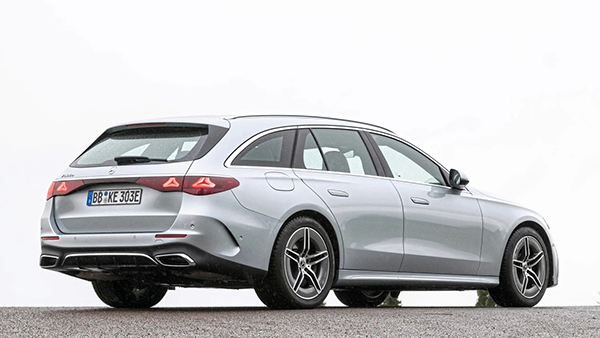
When we tried the E-Class saloon in E 220 d form, we were impressed by its 2.0-litre mild-hybrid diesel engine. The plug-in hybrid driven here uses a 2.0-litre four-cylinder petrol engine mated to 25.kWh battery which Mercedes claims can provide an electric-only range of up 73 miles – dropping to 62 miles on the biggest wheels. We only managed 42 miles, but this was done in cold conditions. European cars get DC fast charging, but the feature isn’t expected to be offered in the UK.
There’s 312bhp and 550Nm of torque from the combined plug-in hybrid powertrain, sending power through a smooth nine-speed automatic transmission. The 0-62mph dash is dealt with in 6.5 seconds, and while that doesn’t sound too impressive given the power available, it makes more sense when you factor in the portly 2,275kg kerbweight; 370kg more than the mild-hybrid model.
That bulk means there’s not much joy to be had trying to throw the E 300 e around – especially in Estate form. The steering is light and there’s decent grip, but where the E-Class really shines is when it comes to refinement. Our car was fitted with the optional air suspension which smothers bumps and imperfections in the road brilliantly – combined with the Acoustic Comfort Package, the E-Class Estate is wonderfully quiet on a cruise.
Our car in AMG Line Premium form costs from £73,150 (Premium Plus is almost £6k more again) – a significant amount of money even in this day and age. Luckily for Mercedes, the Porsche Panamera Sport Turismo has just gone off sale and the BMW 5 Series Touring is between generations. The Audi A6 Avant is coming to the end of its life, though it’s hard to ignore the vastly cheaper Jaguar XF Sportbrake in this part of the market – even if it isn’t available with any fuel-saving PHEV tech.
But with an excellent range of engines, a comfortable, composed ride and plenty of trick features, the E-Class Estate will be a compelling choice in the upper echelons of the estate-car market.
Source: mercedesworld.com

